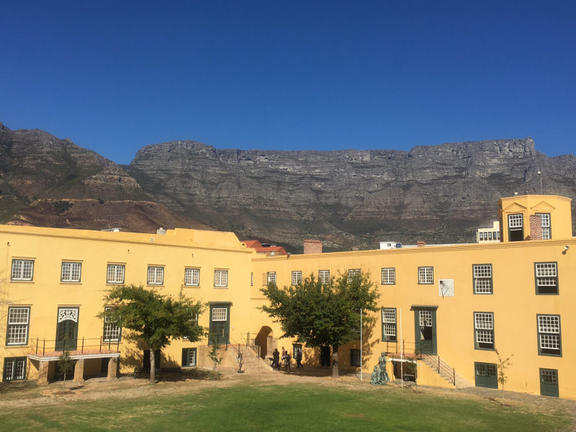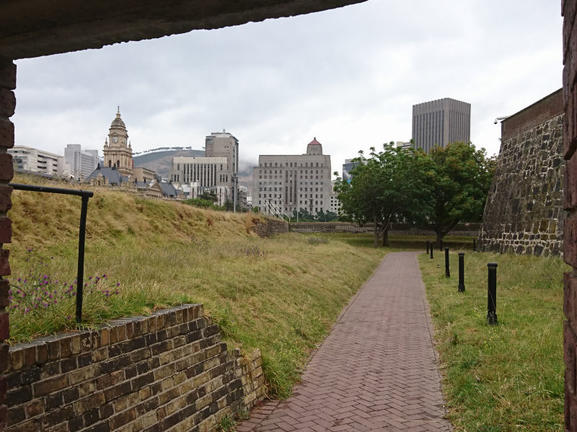The oldest colonial building in South Africa, the bastion fort known as the Castle of Good Hope, is a pentagonal fortress built by Dutch colonialists in the 17th century. The majority of the work was carried out by soldiers and sailors. The well-known landmark is central to the history of Cape Town, having served as the seat of government and military operations for two centuries. A tour of the Castle’s two museums and expansive grounds offer fascinating insight into Cape Town’s military and cultural past. It is considered the best-preserved example of a 17th century architectural structure in the entire world. The pentagonal stone fortress replaced an older fort constructed from clay and timber and built by Jan van Riebeeck, the first Commander of the Cape. It served as the official residence of the Governor of the Cape for the first half of the 19th century. Designed in the Cape Dutch style, the Kat housed the residences of the governor and the second-in-command, a lodge for visitors traveling to the East Indies, and a large council hall that also served as a church.
A bell tower was built in 1684. The original bell, the oldest in South Africa, was cast in Amsterdam in 1697 and weighs over 300 kilograms. It could be heard 10 kilometres away.
The fortress housed a bakery, various workshops, living quarters, shops, and prison cells. It was painted yellow as yellow paint lessened the effect of heat and the sun. The Kat Balcony is the entrance to the governor’s residence and is known for its fluted pillars, wrought-iron railings, and curved staircases designed by the renowned sculptor Anton Anreith. It was from this balcony that announcements and judicial sentences were read to the inhabitants of the Castle. Today the Kat houses the Iziko William Fehr Collection of historical paintings, antique furniture, and ceramics that have special relevance to the early Cape.
Its military function never changed. During the Second Boer War between 1899 and 1902, part of the castle was used as a prison. The Castle acted as local headquarters for the South African Army in the Western Cape, and today houses the Castle Military Museum, and ceremonial facilities for the traditional Cape Regiments. The Castle is also the home of the Cape Town Highlanders Regiment, a mechanised infantry unit. The Castle Military Museum houses an impressive array of military artifacts and exhibits from the 17th to the 19th centuries. Other attractions include the Dolphin Pool, bakery, officers’ living quarters, and the Donker Gat – the Dark Hole - where prisoners awaiting trial were held. The De Goewerneur Restaurant serves delicious Malay, Dutch and French cuisine on-site.
The changing of the guard takes place at noon and the Key Ceremony, replicating the ceremonial unlocking of the Castle, at 10am and noon every weekday, both of which are worth seeing.

